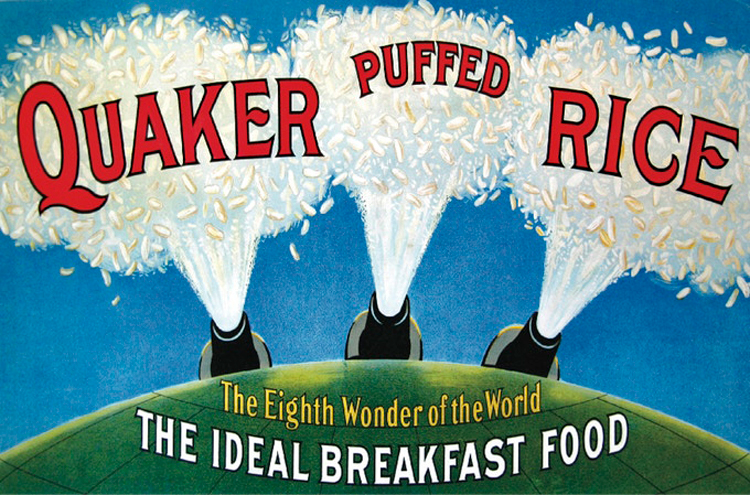 It's a wonder all right
It's a wonder all right
Jul 19, 2019
ARLINGTON, VA -- Puffed rice, the ingredient that adds a pleasant crunch to our chocolate bars and makes our breakfast cereal pop, is so ubiquitous that it’s hard to imagine a time before it existed. But although cooks in India have been enjoying puffed rice as a snack for hundreds of years, the concept didn’t hit the United States until the early 20th century—and it literally exploded onto the scene.
Cereal foods were all the rage in America in the mid-19th century. Doctors and nutritionists believed in their healthful and moderating effects, and fed patients little else. But early cereals were nothing like the crunchy, sugary treats we eat today. The first cereal was nothing more than whole wheat graham flour baked into a cake and then broken apart—not especially appetizing. Consumers wanted cereal, but they also wanted something with better taste and texture.
Enter Alexander P. Anderson, a botanist employed by the New York Botanical Garden. A researcher specializing in plant physiology, Anderson hypothesized that within every starch granule was a molecule of moisture, and set about proving it through experimentation. Using cornstarch and wheat flour, he hermetically sealed the starch in a glass tube and heated it in a 500°F degree oven. As the temperature rose, so did the pressure. Anderson put the finishing touch on the experiment by smashing the glass tube open.
Anderson’s colleagues heard the shotgun-like explosions and came running. What they found was a laboratory in disarray, shattered glass everywhere, and a large stick of perfectly puffed starch, white as snow, and ten times larger than its original volume. Just as Anderson had predicted, the granules heated, the pressure kept the moisture inside from boiling, and once the pressure was relieved by breaking the glass, the moisture instantly vaporized, puffing the starch into a light, crispy, fluffy texture. Anderson repeated his experiment with all kinds of grains, and puffed rice as we know it was born.
The botanist-turned-entertainer took his show on the road at the 1904 World’s Fair in St. Louis, Missouri. Having honed his technique, he astounded crowds with eight puffing “cannons,” 20-inch long bonze tubes that superheated and pressurized rice grains. When Anderson uncapped the tubes by unceremoniously hitting them with a metal rod, puffed rice exploded dramatically into a two-story cage, where workers would collect and sell it for a nickel. By the end of the fair, Anderson had puffed 20,000 pounds of rice.
It wasn’t long until puffed rice was a nation-wide craze. Anderson got a patent on his puffing gun in 1905, and Quaker Oats began selling his creation as a breakfast cereal called Puffed Rice, dubbing it, “The Eighth Wonder of the World.” Puffed rice was celebrated for being easy to digest and having a longer shelf life than regular rice, but the main charm was its novelty.
Today, cereal companies still use a modernized version of Anderson’s technique to create the majority of breakfast cereals, like Captain Crunch, Corn Pops, and of course, Rice Krispies. And while we no longer need to smash open a glass tube or blast it out of a cannon, puffed rice changed the face of breakfast food forever.